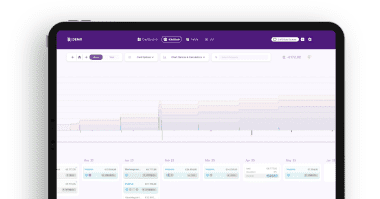Software as a service, or SaaS, has been a growing industry, offering convenience and business-tailored utilities for all-size enterprises. Open banking is a concept where third-party providers have entry into customer banking information. Combined, SaaS and open banking is driving innovations, streamlining business operations, and leveling up customer experience aspects.
As a business owner, or a regular user, you should be aware of these 6 innovations that open banking is sparking in the SaaS field, allowing you to make better financial decisions.
Financial data transparency
Open banking utilizes application programming interfaces (APIs). In simple words, you can view APIs as a conduit connecting third-party apps or websites to bank account information, with customers’ consent. The feature allows users to access all their financial data in one spot. The aggregation of data means consumers will have a complete picture of their finances.
Personalized customer experience
Open banking enables SaaS platforms to parse user spending habits, paving the way for personalized recommendations and offers. Providers can take advantage of data from bank accounts, credit cards, and purchase history to suggest products and services that are catered to consumers’ financial state. As well, retailers can offer product suggestions with price ranges that are more tailored to buyer’s budgets.
Secure buy now, pay later (BNPL) services
Buy now, pay later (BNPL) has become more popular, from service suppliers like Klarna, Affirm, and PayPal, presenting an auspicious market for open banking. BNPL is appealing to consumers, in that they can pay for high-ticket items in smaller chunks over time. Open banking provides the necessary data for BNPL platforms to verify identity, retrieve financial details, and make lending decisions. Together, BNPL and open banking facilitate a secure, simplified, and convenient purchasing experience for the user.
Tailored wealth management services
Wealth management has long been an undisrupted, legacy field in the financial landscape. However, with the advent of open banking, financial institutions are chasing innovations to attract customers and retain their competitive edges. Wealth managers are incorporating open banking into financial software, allowing investment advice best suitable for individuals’ goals, risk and return preferences, and investment horizons.
Straightforward tax preparation process
Tax season can cause a headage for enterprises as well as regular taxpayers because of all the involved records, documents, and bills. But to that end, since tax preparers can draw on clients’ financial data via open banking, the whole process will become more efficient, removing the cumbersome process of compiling tax-related materials, slashing lead time for the service, and subsequently reducing costs.
Streamlined signup process
Since service providers will be able to store your data, attributing to APIs, they can provide a more frictionless signup process. Customers don’t have to manually fill out all the forms and paperwork. Every field can be automatedly completed thanks to the aggregate data the provider has access to. This will have an impactful implication for businesses, as a seamless and straightforward signup process leads to customer acquisitions and boosts profitability.
Conclusion
Thanks to the disruptive nature of open banking, business owners, especially SaaS providers, can capitalize on the new technology to enhance their operations. A more streamlined operating pipeline, improved customer experience, and enhanced available offerings are some of the benefits made possible by open banking. SaaS platforms will further generate more innovations as open banking become even more developed.


